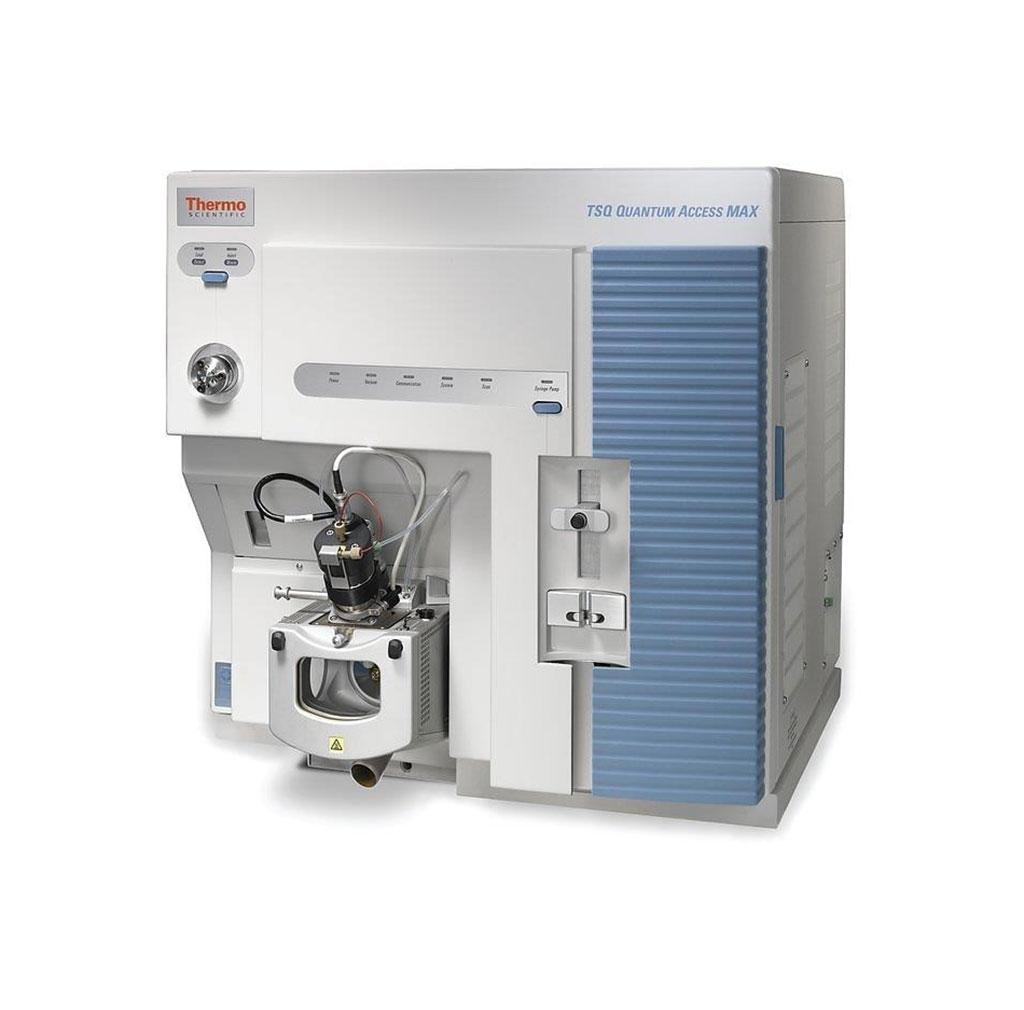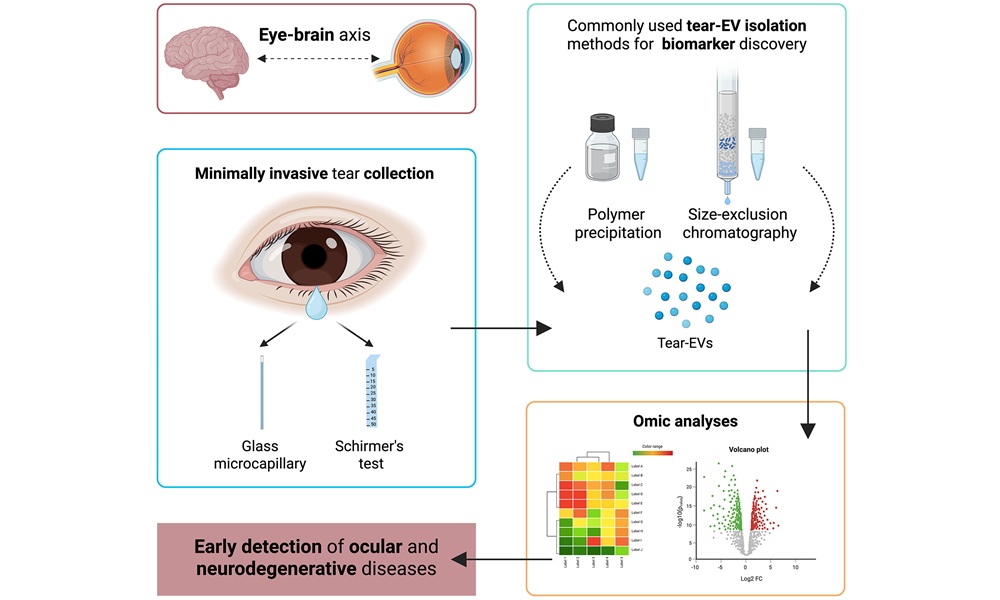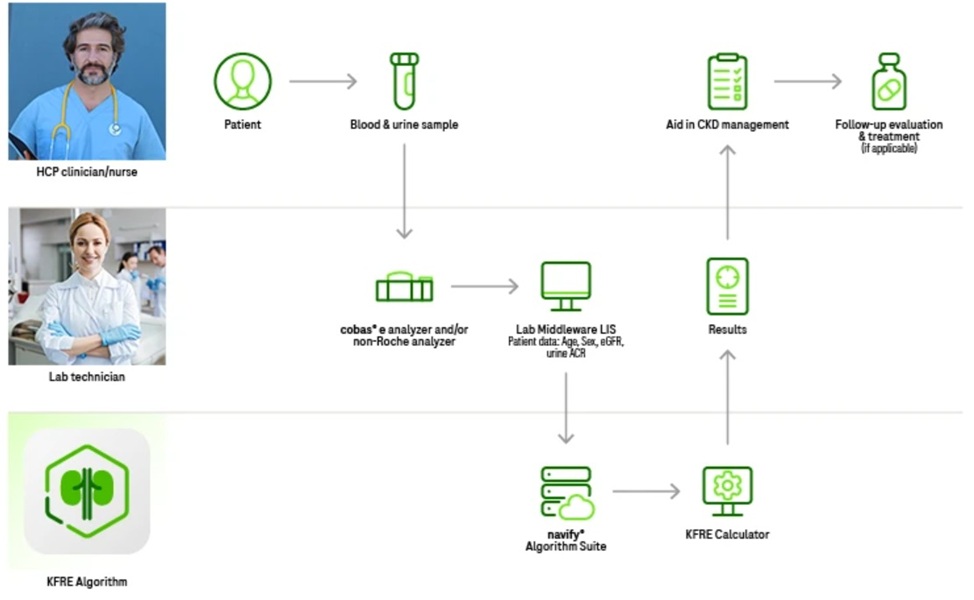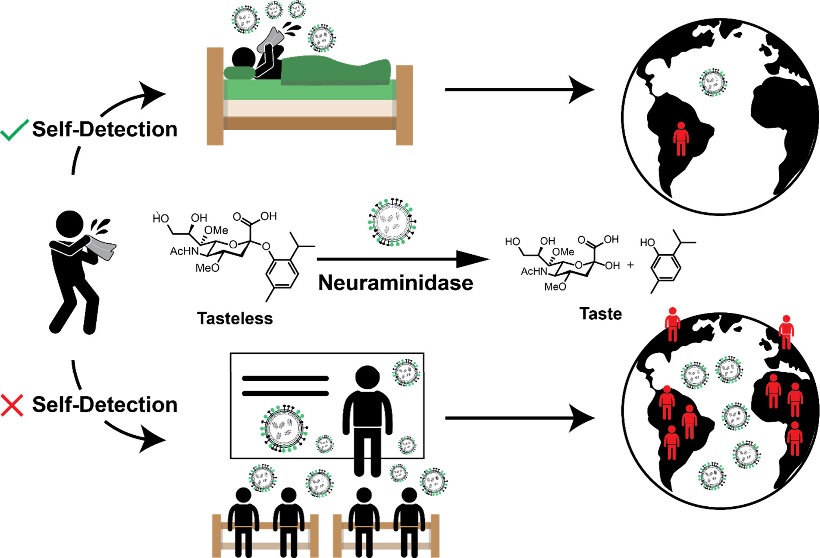Blood Sphingolipidomics Associated with Lupus Cardiovascular Comorbidity
|
By LabMedica International staff writers Posted on 04 Dec 2019 |

Image: The Quantum Access triple quadruple mass spectrometer (Photo courtesy of Thermo Scientific)
Systemic lupus erythematosus (SLE) is a chronic autoimmune disease with heterogeneous organ involvement and severity. The cause of SLE is unknown, and there is at present no cure. The majority of people with lupus are females, and African-American women are three times more likely than White women to have lupus and develop severe symptoms.
The risk for cardiovascular disease (CVD) is almost ten times higher in patients with autoimmune diseases than in the general population. Despite the dyslipidemia and accelerated CVD associated with SLE, the significance of the conventional plasma lipid panel (e.g., cholesterol and triglycerides) in the diagnosis/prognosis of CVD in SLE patients has been in question.
Scientists from the Medical University of South Carolina (Charleston, SC, USA) enrolled 411 new lupus and 141 control participants since April, 2013. Plasma samples have been collected, often across multiple visits, from 358 lupus patients and 179 healthy controls that were negative for autoimmune disease. For this study, 73 female SLE patients and 34 unrelated controls were selected from the cohorts for comparison of their sphingolipid profiles.
Mass spectroscopy was used to measure plasma levels of individual species of five classes of sphingolipids: Cers, sphingoid bases: sphingosine and dihydrosphingosine (dhSph) and their phosphates (S1P and dhSph-1P, respectively), SM, and hexosyl- and lactosylceramides (Hex-Cer and Lact-Cer, respectively). The sphingolipids in plasma extracts were separated and their masses quantitated using high performance liquid chromatography-tandem mass spectrometry. Lipids eluted during chromatography were detected and quantitated using a Quantum Access triple quadruple mass spectrometer (Thermo Fisher Scientific, Waltham, MA, USA) equipped with an electrospray ion source (ESI) operating in multiple reaction monitoring (MRM) positive ion mode.
The scientists reported that compared to African-American controls, African-American SLE patients had higher levels of ceramides, hexosylceramides, sphingosine and dihydrosphingosine 1-phosphate. Compared to White controls, White SLE patients exhibited higher levels of sphingoid bases and their phosphates, but lower ratios of C16:0 ceramide/sphingosine 1-phosphate and C24:1 ceramide/sphingosine 1-phosphate. White SLE patients with atherosclerosis exhibited lower levels of sphingoid bases compared to White SLE patients without atherosclerosis. In contrast, African-American SLE patients with atherosclerosis had higher levels of sphingoid bases and sphingomyelins compared to African-American SLE patients without atherosclerosis. Compared to White SLE patients with atherosclerosis, African-American SLE patients with atherosclerosis had higher levels of select sphingolipids.
Samar M. Hammad, PhD, associate professor in the Department of Regenerative Medicine and Cell Biology and first author of the study, said, “We know that the African American community has higher high-density lipoprotein (HDL) cholesterol, which is a good thing, and lower triglycerides, which is a good thing, but nonetheless, they have more heart disease than the white population. So it is about time to start looking at other molecules and other markers that can explain, at least in part, why African Americans develop more cardiovascular disease, and that's particularly true in autoimmune diseases such as lupus and Type 1 diabetes.” The study was published on November 20, 2019 in the journal PLOS ONE.
Related Links:
Medical University of South Carolina
Thermo Fisher Scientific
The risk for cardiovascular disease (CVD) is almost ten times higher in patients with autoimmune diseases than in the general population. Despite the dyslipidemia and accelerated CVD associated with SLE, the significance of the conventional plasma lipid panel (e.g., cholesterol and triglycerides) in the diagnosis/prognosis of CVD in SLE patients has been in question.
Scientists from the Medical University of South Carolina (Charleston, SC, USA) enrolled 411 new lupus and 141 control participants since April, 2013. Plasma samples have been collected, often across multiple visits, from 358 lupus patients and 179 healthy controls that were negative for autoimmune disease. For this study, 73 female SLE patients and 34 unrelated controls were selected from the cohorts for comparison of their sphingolipid profiles.
Mass spectroscopy was used to measure plasma levels of individual species of five classes of sphingolipids: Cers, sphingoid bases: sphingosine and dihydrosphingosine (dhSph) and their phosphates (S1P and dhSph-1P, respectively), SM, and hexosyl- and lactosylceramides (Hex-Cer and Lact-Cer, respectively). The sphingolipids in plasma extracts were separated and their masses quantitated using high performance liquid chromatography-tandem mass spectrometry. Lipids eluted during chromatography were detected and quantitated using a Quantum Access triple quadruple mass spectrometer (Thermo Fisher Scientific, Waltham, MA, USA) equipped with an electrospray ion source (ESI) operating in multiple reaction monitoring (MRM) positive ion mode.
The scientists reported that compared to African-American controls, African-American SLE patients had higher levels of ceramides, hexosylceramides, sphingosine and dihydrosphingosine 1-phosphate. Compared to White controls, White SLE patients exhibited higher levels of sphingoid bases and their phosphates, but lower ratios of C16:0 ceramide/sphingosine 1-phosphate and C24:1 ceramide/sphingosine 1-phosphate. White SLE patients with atherosclerosis exhibited lower levels of sphingoid bases compared to White SLE patients without atherosclerosis. In contrast, African-American SLE patients with atherosclerosis had higher levels of sphingoid bases and sphingomyelins compared to African-American SLE patients without atherosclerosis. Compared to White SLE patients with atherosclerosis, African-American SLE patients with atherosclerosis had higher levels of select sphingolipids.
Samar M. Hammad, PhD, associate professor in the Department of Regenerative Medicine and Cell Biology and first author of the study, said, “We know that the African American community has higher high-density lipoprotein (HDL) cholesterol, which is a good thing, and lower triglycerides, which is a good thing, but nonetheless, they have more heart disease than the white population. So it is about time to start looking at other molecules and other markers that can explain, at least in part, why African Americans develop more cardiovascular disease, and that's particularly true in autoimmune diseases such as lupus and Type 1 diabetes.” The study was published on November 20, 2019 in the journal PLOS ONE.
Related Links:
Medical University of South Carolina
Thermo Fisher Scientific
Latest Clinical Chem. News
- VOCs Show Promise for Early Multi-Cancer Detection
- Portable Raman Spectroscopy Offers Cost-Effective Kidney Disease Diagnosis at POC
- Gold Nanoparticles to Improve Accuracy of Ovarian Cancer Diagnosis
- Simultaneous Cell Isolation Technology Improves Cancer Diagnostic Accuracy
- Simple Non-Invasive Hair-Based Test Could Speed ALS Diagnosis
- Paper Strip Saliva Test Detects Elevated Uric Acid Levels Without Blood Draws
- Prostate Cancer Markers Based on Chemical Make-Up of Calcifications to Speed Up Detection
- Breath Test Could Help Detect Blood Cancers
- ML-Powered Gas Sensors to Detect Pathogens and AMR at POC
- Saliva-Based Cancer Detection Technology Eliminates Need for Complex Sample Preparation
- Skin Swabs Could Detect Parkinson’s Years Before Symptoms Appear
- New Clinical Chemistry Analyzer Designed to Meet Growing Demands of Modern Labs

- New Reference Measurement Procedure Standardizes Nucleic Acid Amplification Test Results
- Pen-Like Tool Quickly and Non-Invasively Detects Opioids from Skin
- Simple Urine Test Could Detect Multiple Cancers at Early Stage
- Earwax Test Accurately Detects Parkinson’s by Identifying Odor Molecules
Channels
Molecular Diagnostics
view channel
Urine Test Could Replace Painful Kidney Biopsies for Lupus Patients
Lupus is an autoimmune disorder that causes the immune system to attack the body’s own tissues and organs. Among the five million people living with lupus globally, nearly half develop lupus nephritis,... Read more
Blood Test Guides Post-Surgical Immunotherapy for Muscle-Invasive Bladder Cancer
After surgery for muscle-invasive bladder cancer, many patients face uncertainty about whether residual cancer cells remain in their bodies. Now, a new international phase 3 study has demonstrated that... Read more
Mitochondrial DNA Mutations from Kidney Stressors Could Predict Future Organ Decline
Kidney-related diseases are alarmingly common: chronic kidney disease (CKD) affects more than one in seven U.S. adults, while about 20% of hospitalized adults are diagnosed with acute kidney injury (AKI).... Read moreHematology
view channel
Viscoelastic Testing Could Improve Treatment of Maternal Hemorrhage
Postpartum hemorrhage, severe bleeding after childbirth, remains one of the leading causes of maternal mortality worldwide, yet many of these deaths are preventable. Standard care can be hindered by delays... Read more
Pioneering Model Measures Radiation Exposure in Blood for Precise Cancer Treatments
Scientists have long focused on protecting organs near tumors during radiotherapy, but blood — a vital, circulating tissue — has largely been excluded from dose calculations. Each blood cell passing through... Read more
Platelets Could Improve Early and Minimally Invasive Detection of Cancer
Platelets are widely recognized for their role in blood clotting and scab formation, but they also play a crucial role in immune defense by detecting pathogens and recruiting immune cells.... Read more
Portable and Disposable Device Obtains Platelet-Rich Plasma Without Complex Equipment
Platelet-rich plasma (PRP) plays a crucial role in regenerative medicine due to its ability to accelerate healing and repair tissue. However, obtaining PRP traditionally requires expensive centrifugation... Read moreImmunology
view channel
Blood-Based Liquid Biopsy Model Analyzes Immunotherapy Effectiveness
Immunotherapy has revolutionized cancer care by harnessing the immune system to fight tumors, yet predicting who will benefit remains a major challenge. Many patients undergo costly and taxing treatment... Read more
Signature Genes Predict T-Cell Expansion in Cancer Immunotherapy
Modern cancer immunotherapies rely on the ability of CD8⁺ T cells to rapidly multiply within tumors, generating the immune force needed to eliminate cancer cells. However, the biological triggers behind... Read moreMicrobiology
view channel
Fast Noninvasive Bedside Test Uses Sugar Fingerprint to Detect Fungal Infections
Candida bloodstream infections are a growing global health threat, causing an estimated 6 million cases and 3.8 million deaths annually. Hospitals are particularly vulnerable, as weakened patients after... Read more
Rapid Sepsis Diagnostic Device to Enable Personalized Critical Care for ICU Patients
Sepsis is a life-threatening condition that occurs when the body’s response to infection spirals out of control, damaging organs and leading to critical illness. Patients often arrive at intensive care... Read morePathology
view channel
Tears Offer Noninvasive Alternative for Diagnosing Neurodegenerative Diseases
Diagnosing and monitoring eye and neurodegenerative diseases often requires invasive procedures to access ocular fluids. Ocular fluids like aqueous humor and vitreous humor contain valuable molecular information... Read more
AI-Powered Method Combines Blood Data to Accurately Measure Biological Age
Chronological age tells us how many years we’ve lived, but not how quickly our bodies are ageing. Some people stay healthy well into their 80s or 90s, while others experience decline much earlier.... Read moreTechnology
view channel
Viral Biosensor Test Simultaneously Detects Hepatitis and HIV
Globally, over 300 million people live with Hepatitis B and C, and 40 million with HIV, according to WHO estimates. Diagnosing bloodborne viruses such as HIV and Hepatitis B and C remains challenging in... Read more
Acoustofluidic Device to Transform Point-Of-Care sEV-Based Diagnostics
Rapid and sensitive detection of small extracellular vesicles (sEVs)—key biomarkers in cancer and organ health monitoring—remains challenging due to the need for multiple preprocessing steps and bulky... Read moreIndustry
view channel
Advanced Instruments Merged Under Nova Biomedical Name
Advanced Instruments (Norwood, MA, USA) and Nova Biomedical (Waltham, MA, USA) are now officially doing business under a single, unified brand. This transformation is expected to deliver greater value... Read more




















